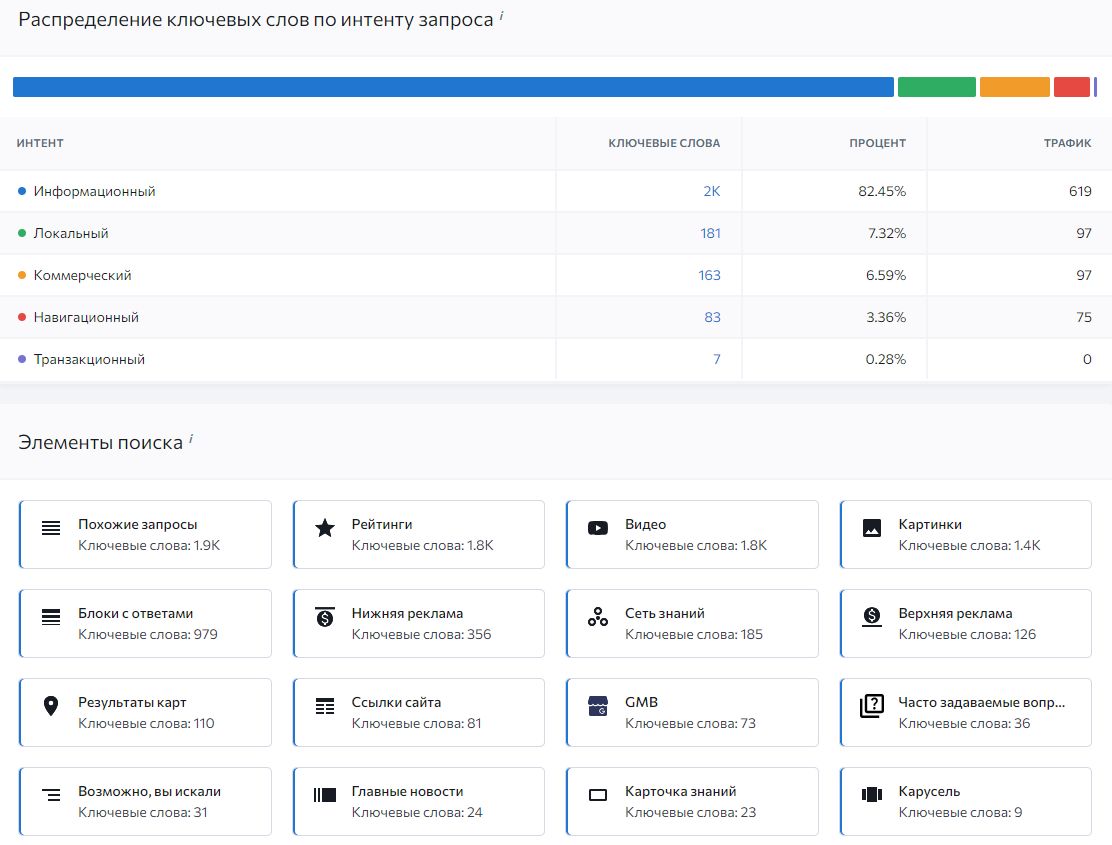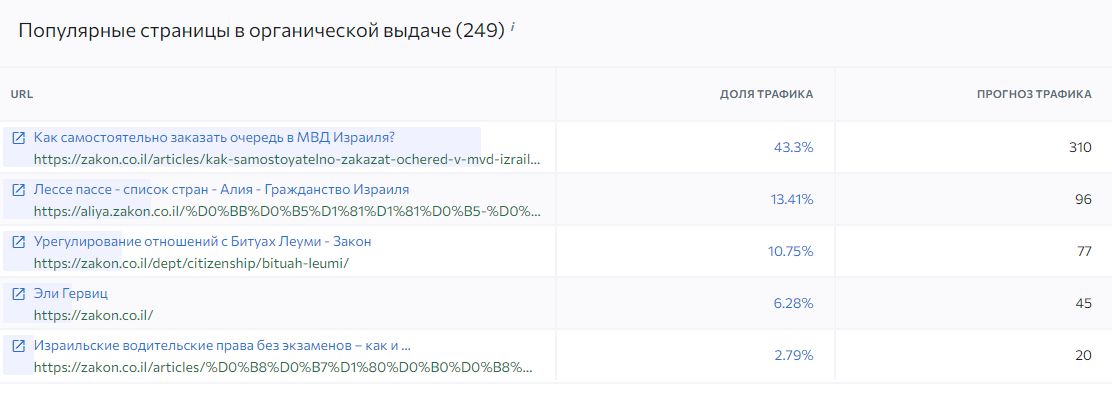Content
- 1 Why is promoting a lawyer’s website important for your practice?
- 2 Basic SEO Strategies for Lawyers
- 3 Content marketing for a lawyer’s website
- 4 Technical SEO
- 5 Link promotion and its meaning
- 6 Social networks as a promotion tool
- 7 Customer reviews and their impact on reputation
- 8 Google My Business for lawyers
- 9 Monitoring and analysis of promotion results
Promoting a lawyer’s website is a multifaceted process that requires a deep understanding of both the features of the legal industry and the nuances of digital marketing. In this article, we will look at key strategies and unique approaches to promoting a lawyer’s website that will help not only increase online visibility, but also build trust with potential clients. From tailored content and SEO optimization to social media and video marketing, every aspect matters in creating a successful legal marketing for an attorney’s online presence.
Why is promoting a lawyer’s website important for your practice?
In the era of digitalization, the first place a potential client turns when looking for legal services is the Internet. Website promotion allows attorneys to increase the visibility of their practice, attract new clients and establish trust before meeting in person. In a competitive environment, this can be a decisive factor in choosing your service.
Basic SEO Strategies for Lawyers
SEO (search engine optimization) for lawyer websites requires a specific approach, given the competitive environment and the strict regulation of advertising of legal services, I have already described the details earlier in the article “Promotion of legal websites“. Here we describe the most important strategies to focus on:
- Keyword Selection: Start by carefully selecting keywords that potential clients might use to search for legal services. Include both general terms and long-tail keywords that reflect the specifics of your practice (for example, “family law attorney in [city]”).
- Content Optimization: Make sure every page on your site contains high-quality, relevant content optimized for your chosen keywords. This will improve not only the visibility of the site in search engines, but also its perception by users.
- Local SEO: For lawyers, as a rule, it is important to attract clients from their city or region. Pay special attention to local SEO, including optimizing for Google My Business (using the new Google Business Profile), adding your site to local directories, and using geotargeting in your content.
- Meta tag optimization: Title and description tags should be attractive and contain keywords. They play a key role in how your site is presented in search results.
- Improving User Experience (UX): Make sure your site is user-friendly with fast loading pages, mobile responsive design, and a logical navigation structure.
- Improving behavioral ranking factors: In this regard, using contextual advertising of legal services is a very useful place to start, as it significantly improves behavioral ranking factors. By showing advertisements to the target audience, you can significantly increase traffic to the site, as well as increase the time users spend on it and reduce the bounce rate. These parameters are important signals to search engines about the quality of the site and its compliance with user requests. As a result, a lawyer’s website that uses contextual advertising can receive higher rankings in search results, which in turn attracts even more potential clients.
Content marketing for a lawyer’s website
Content marketing plays a central role in attracting and retaining the attention of potential clients, and in establishing your credibility as an expert in a particular area of law.
- Creating Useful Content: Develop content that solves problems and answers questions for your target audience. This may include articles, blog posts, frequently asked questions (FAQs), guides, case studies and analytical materials on current legal issues.
To draw up a content plan specifically for SEO, we recommend that you first conduct a competitor analysis, for example, through SeRanking.

The screenshot shows an analysis of the website zakon.co.il (Israel), which we did to promote a lawyer’s website. To prepare ideas, we can immediately look at the intent of queries (for blog posts we can start with informational ones), then we analyze the “Search Elements”, i.e. What’s in the TOP besides the article itself? We see that there is a video (we add a note that we also need to insert the video into the article and promote the video on YouTube using the appropriate keywords). We see that there is a block with Frequently Asked Questions, which means we need such a separate block in the article and we will definitely add FAQ, etc. to the micro markup.

And of course, we look at the TOP articles that bring the most traffic. What category are they in, what is the topic, list of keywords, what level of nesting, etc.
- Regular content updates: Constantly updating the site with new content not only maintains the interest of the audience, but also has a positive effect on the site’s ranking in search engines.

- Video Content: Producing video content such as interviews, lectures, and legal case reviews can greatly increase audience engagement and provide insight into complex legal concepts in an accessible way. Read more about the case “YouTube in jurisprudence: transformation of Arthur Blayer’s YouTube channel.”
- Using Social Media: Having an active presence on social media and sharing your content through these platforms increases your reach and helps drive traffic to your site. I already wrote about this in more detail in the article “Promotion of legal services on social networks.”
- Email marketing: Regularly sending useful information to subscribers helps maintain contact with potential and existing clients, reminding them of your professionalism and the availability of legal services.
Technical SEO
Technical SEO deals with the on-page optimization of a website to improve its indexing by search engines and improve the user experience.
An important aspect of technical SEO is creating clean and logical page code, as well as optimizing the URL structure for ease of navigation for both users and search engines.
In addition, it is important to regularly audit the site for broken links (404 server response code) or duplicate pages, which can negatively affect the site’s ranking.
Technical SEO also includes creating and optimizing a robots.txt file to control which pages should be indexed and creating an XML sitemap that helps search engines crawl your site more efficiently.
Read also details about this in the block “Technical audit of the site”.
Link promotion and its meaning
Link promotion is one of the key elements of SEO, since the quality and number of external links to a site significantly affect its position in search results. External links are considered “votes” for a site, indicating its authority and relevance on certain topics or issues.
The process of getting quality backlinks includes posting guest articles on reputable platforms, participating in professional communities and forums, and interacting with bloggers and website owners to receive mentions and links.
It is important to focus your efforts on getting natural links from sites whose topics are similar or overlap with your specialization. This not only helps improve rankings in search engines, but also attracts the target audience to the site.
Why you can’t do link building on your own without experience in SEO
Now I’ll tell you a little about the internal workings of our company, because some Clients think that building a link mass is easy, like registering with an exchange, funding your account, buying a link.
Let’s see what’s behind these services.
Link building (building a link mass) is the process of obtaining external links to your website. Link building is part of the SEO work package. This is one of the key aspects of search engine optimization as search engines like Google use these links as one of the most important factors in ranking sites. And the goal of SEO work for a website is to increase its ranking in search results, i.e. ranking.
Here are the main components of the link building service we provide.
- Niche and competitor analysis
Every month we analyze Google’s TOP by keyword to see which sites on our topic are in the TOP, and on which of them we can be placed. Paid tools such as Ahrefs and Seranking are used for this. This helps you determine which sites are authoritative in your field and where you should aim to get links.
- Audit of the current link profile
We constantly monitor existing external links to our site. This includes assessing the quality and relevance of these links, as well as identifying possible problems, for example, the page is not indexed or the webmaster may have removed our link, etc. Because It is physically impossible to monitor a huge number of links manually; paid tools are also used.

A small screenshot example from the system for monitoring backlinks.
- Monthly plan for receiving high-quality and relevant links
According to the plan, we identify suitable donors and compile a list of target sites for placing links (with all the metrics TF, DA, traffic, geo, etc.). The list obtained during our selection is agreed upon monthly with the customer’s employee.
- Content creation.
- First, we come up with topics for articles and approve them with the customer.
- We compile a list of anchors and approve them from customers. In addition, it is important to correctly place the anchor, near-anchor text and relevant link.
- To publish articles, we draw up technical specifications for the copywriter, check the text’s compliance with the technical specifications. We select pictures for these articles.
- Working with link exchanges
- Creating and setting up campaigns on the exchange
- Selection of donors according to the criteria from the strategy
- communication with webmasters, checking the correctness of tasks for posting an article on each donor (correctness of hyperlinks, meta tags, H1, H2, H3 headings, bulleted and numbered lists, formats, etc.).
- Monitoring and analysis
Regular tracking and analysis of received links, assessing their impact on SEO and adjusting the strategy if necessary. This also includes monitoring changes in search engine algorithms that may affect link building performance.
- Monitoring bad links
Identification and removal of harmful external links that can harm your site’s reputation and ranking in search results.
- Project management
Tracking the progress of project tasks; tracking and quality control of work; deadline management; risk management.
- Use of paid tools.
For all analysis and monitoring work for the purpose of selecting donors, it is necessary to use paid tools that allow you to: a) generate data for analysis and monitoring; b) automate these works. Namely, we use Ahrefs, Seranking, Similarweb, Semrush, etc.
- Bonus. SEO consulting on all SEO issues, including link building, but not only
On average, 2-3 hours are spent per week on consulting in terms of SEO, on any issues, this could be a question about new errors in the Search Console, checking improvements to the site for the programmer, setting priorities for expanding the range, etc. . Consulting is carried out through correspondence (messengers), voice messages, video recordings.
Social networks as a promotion tool
Social networks play an important role in promoting a lawyer’s website, providing a platform for interaction with potential and current clients. Presence on social networks increases brand awareness and helps build trust with the audience.
Through social media, attorneys can demonstrate their expertise, share useful information and news about their practice, and interact with audiences through comments and discussions. It is important to stay active on your chosen platforms and publish content that will be interesting and useful to your target audience. This approach helps not only attract new customers, but also strengthen the loyalty of existing ones.
Social networks are of particular importance for lawyers in the context of local promotion, allowing them to establish a direct dialogue with the audience in a particular region and emphasize their availability for discussing legal issues.
Read more “Promotion of legal services on social networks”.
Customer reviews and their impact on reputation
Client reviews significantly influence the reputation of a lawyer and his practice on the Internet. Positive reviews can significantly increase the trust of potential clients and strengthen your reputation as a reliable professional.
It is important not only to encourage satisfied clients to leave reviews on various platforms, including the lawyer’s website and social media profiles, but also to be sensitive to negative reviews. Responding appropriately and professionally to a negative review can show your interest in solving customer problems and improving the quality of your services, which will also have a positive impact on the perception of your practice.
Google My Business for lawyers
Google My Business (GMB) or Google Business Profile is a powerful tool for promoting your attorney’s services locally. Having an up-to-date GMB/GBP profile allows the practice to appear in local searches and Google Maps, increasing visibility to potential clients in your area.
It is important to regularly update your profile information, including contact details, opening hours, office photos and services provided. It’s also a good idea to post news and updates about your practice to improve customer engagement. Customer reviews in your profile also play an important role in improving your reputation and helping you attract new customers.
Monitoring and analysis of promotion results
Monitoring and analyzing results are critical aspects of any marketing strategy, including lawyer website promotion. This helps you understand how effective your investments in various promotion channels have been and determine which methods provide the best ROI (return on investment). Using web analytics tools such as Google Analytics allows you to track key website performance indicators, including traffic, traffic sources, user behavior on the site and conversion.
Regular analysis of this data helps identify successful strategies and areas for optimization. It’s also important to monitor your site’s search engine rankings for targeted keywords to gauge the effectiveness of your SEO efforts.
Developing a comprehensive strategy for promoting a lawyer’s website is a multi-step process that requires attention to detail and constant development.
Expert in legal marketing. Head of marketing agency MAVR.
Business degree “Master of Business Administration” (MBA).
